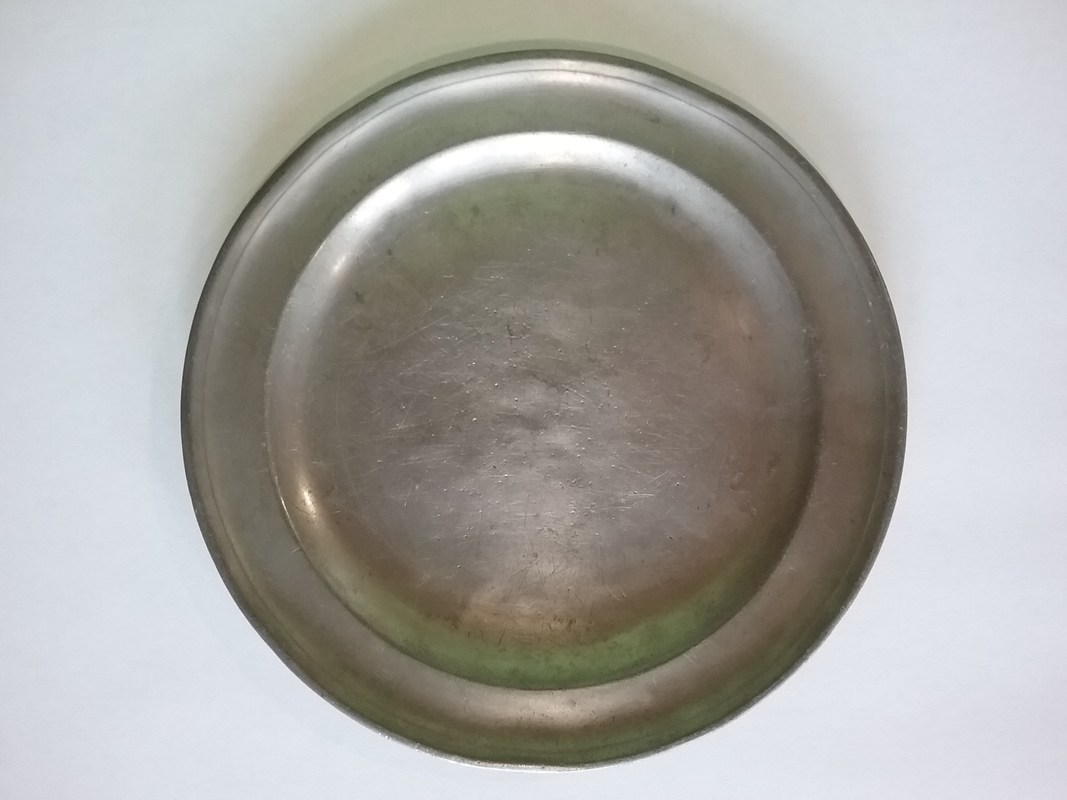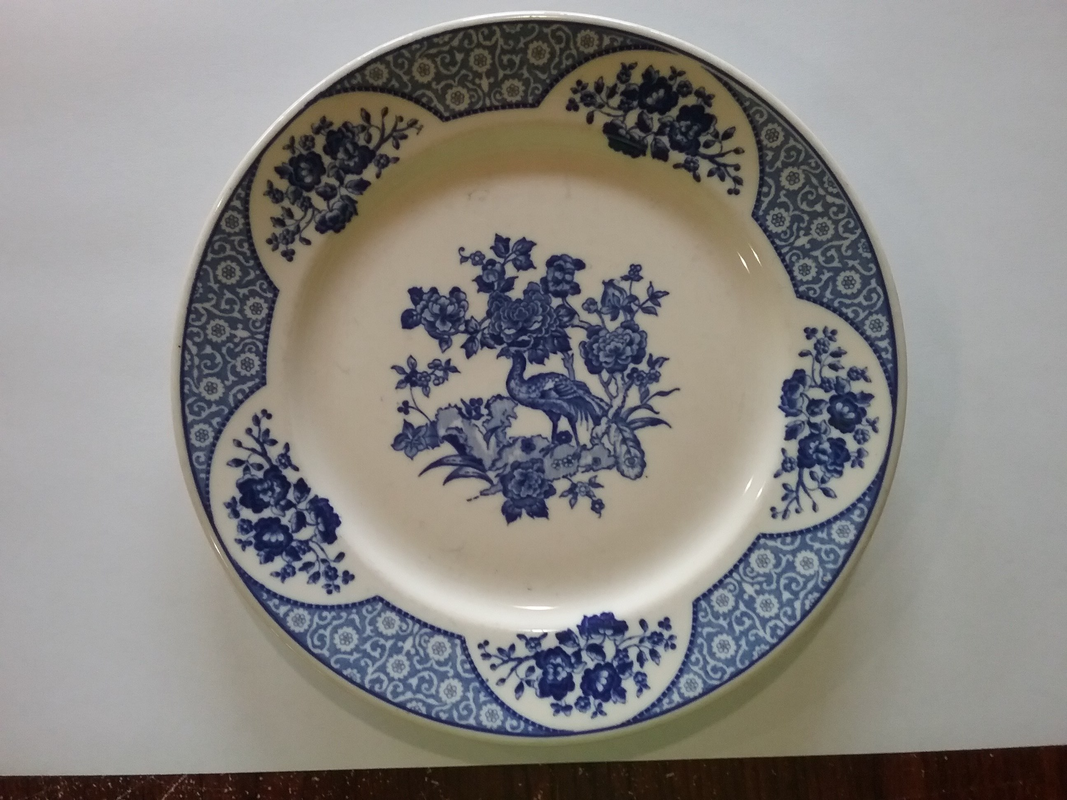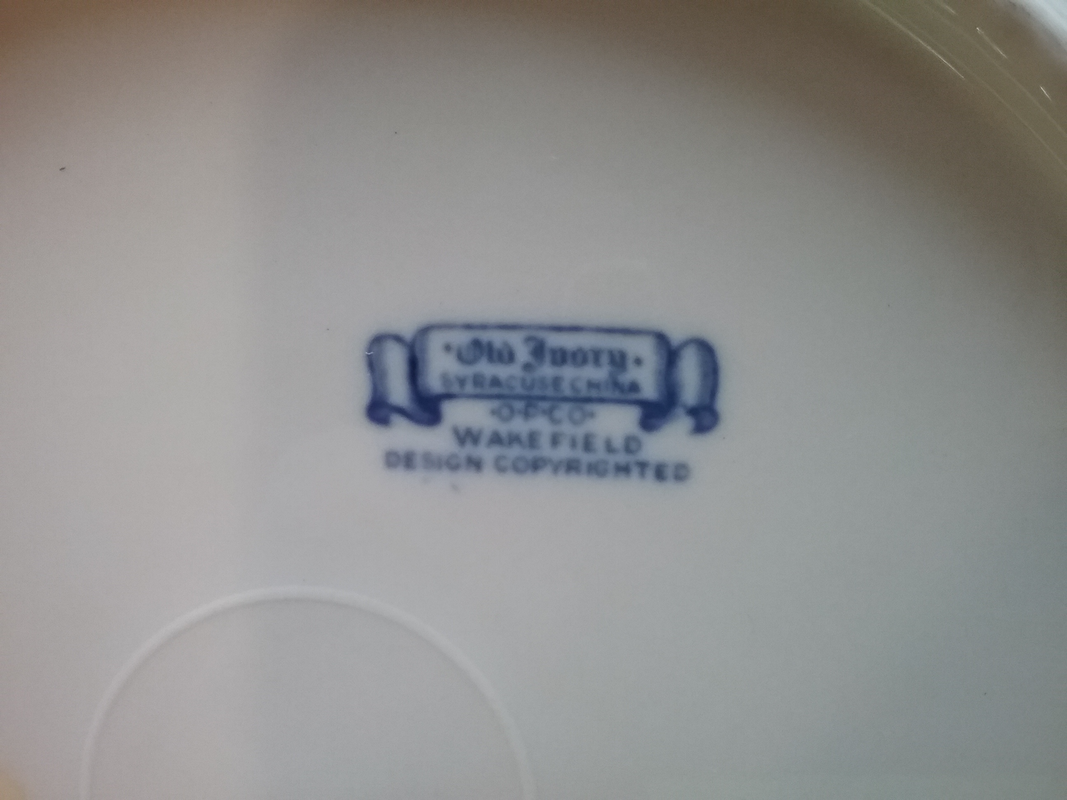|
Greetings from h-o-t Easton! The dog days of summer are here and today I find myself in the midst of our second official heat wave. A few weeks ago, an unknown angel dropped off a case of Moxie (sugar free!) at the Museum. What a pleasant surprise I had when I arrived the next morning to find it waiting for me! So, whomever you may be, many thanks from me to you. I have been enjoying that ice cold, refreshing concoction during these hot summer days. Today we will take a brief look at a “Tale of Two Dishes” to paraphrase a writer much better than I. On exhibit this month, these two items are taken from our collections and tell two very different stories. First up is one of our earliest pieces, a gift to us from the late Earl Nichols. He and I had several wonderful visits over the years. Earl was a direct descendent of Sgt. William Harlow of Plymouth, Ma., who built the Old Harlow Fort House in 1677 using timber from the Pilgrim’s original fort house. The house served as the home of the Harlow family for 250 years! Today the house is a museum owned by the Plymouth Antiquarian Society and is a rare example of a first period structure in Plymouth. For many years, Earl and his family attended annual Harlow Family Reunions (Earl led the annual worship service). During one of his last trips to Easton, he gave a very special pewter dish to the Museum. Hannah Fuller (1771-1850) was born in Sharon and married Reuben Harlow (1773-1823) of Easton in 1791. Together they raised several children somewhere in the Poquanticut section of town. I was unable to find her name on our 1825 map, so after her husband’s death she may have moved in with family. Her son Tisdale built a farmhouse on Poquanticut Avenue by that time, and there were also two Fuller families living on Highland Street near the Mansfield Line. The plate below was owned by Hannah prior to her marriage. It is a simple design, with a raised edge around its approximately 7” diameter. Antique pewter is made primarily from tin and lead, and has a distinct color to it. It is also exceedingly soft and pliable, wears very easily, and can be damaged quickly. Earl thought it was very important that this plate be returned to Easton, where Reuben and Hannah built their life together, and where for many generations, descendants still lived. The initials “HF” are stamped on the back of the plate, meaning Hannah may have received this before her marriage. There are no hallmarks or other maker’s marks on the plate, so we may never know who made it or where it was purchased. It is possible a local foundry cast the plate. It is a very special piece and provides a very rare, direct connection to one of the hard-working early families of Easton. The second dish may be more recognizable as it is connected to an Easton lady who ran a well-known establishment. The Toll House Restaurant, which stood for many years on Bedford Street, Whitman, Ma., is well known and fondly remembered, as was the owner and host, 1920 Oliver Ames High School graduate Ruth Graves Wakefield (1903-1977.) Ruth studied nutrition in college, and taught as a dietician at hospitals and schools. She and her husband Kenneth Wakefield (1897-1997) pooled their money and in 1930 opened the legendary restaurant, where she specialized in small batch, high quality cooking with the best ingredients. The success of the Toll House Cookie in the late 1930’s as well as notice from famous food critic Duncan Hines and an appearance on a Betty Crocker television show made the local landmark iconic in American history. Ruth paid great attention to details, and that included the plates on which she served her cuisine. Sometime around the late 1930’s or early 1940’s Ruth created and patented a design for dishes that was used for decades at the restaurant. The plate, around 10” in diameter, and rather heavy to survive constant restaurant use, featured what appears to be a peacock in a group of lotus flowers. More floral decorations are found around the wide rim. A bright cobalt blue was used for the print, contrasting brilliantly with the white chine background. The design is instantly recognizable. A mark on the reverse identifies this as “Old Ivory” Syracuse China. The mark also includes the Wakefield design trademark. Not much remains from the former Toll House that burned in 1984 (The Wakefield’s sold the business several years prior.) Those of us who were privileged to dine there will remember these dishes. On a side note, over 30 years ago my wife and I purchased one of these plates at a Society fundraiser. We carefully kept our one plate safe for many years. A month ago, we were in Plymouth for a day out. Looking in an antique shop, lo and behold, hanging on a wall was one of the Toll House plates! Now we are the proud owners of two of these plates, and at long last we have one for both of us. Now, if only I could cook like Ruth!
Stay cool and stay well, Frank
0 Comments
Your comment will be posted after it is approved.
Leave a Reply. |
Author
Anne Wooster Drury Archives
June 2024
Categories |
Easton Historical Society and Museum
PO Box 3
80 Mechanic Street
North Easton, MA 02356
Tel: 508-238-7774
[email protected]



